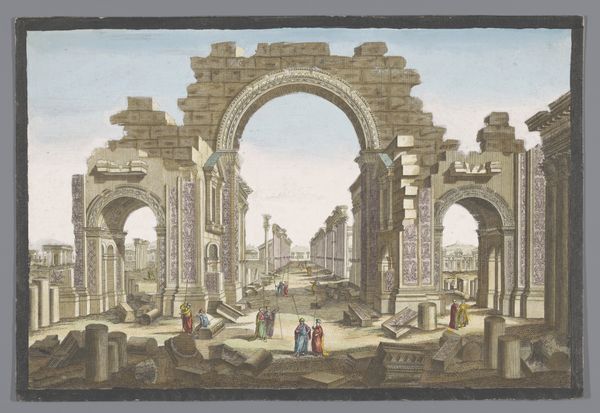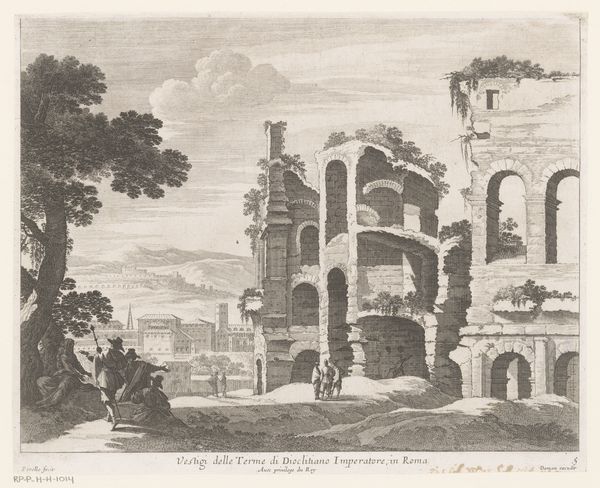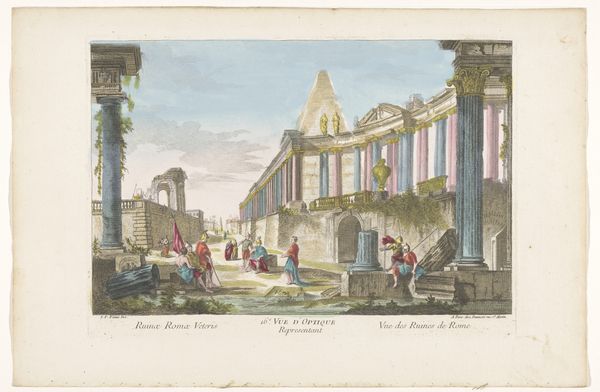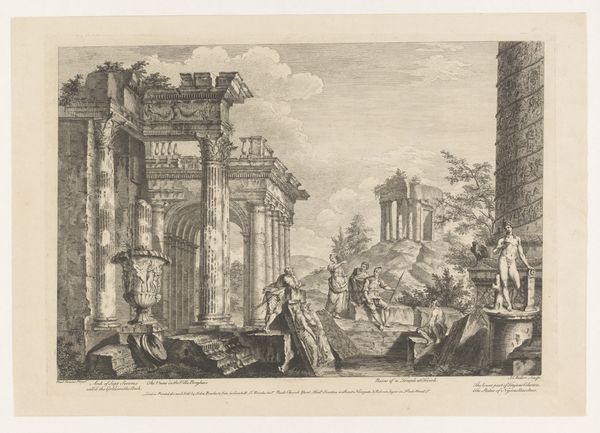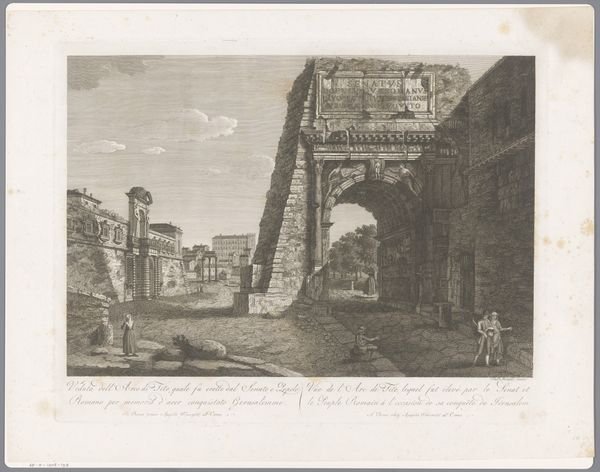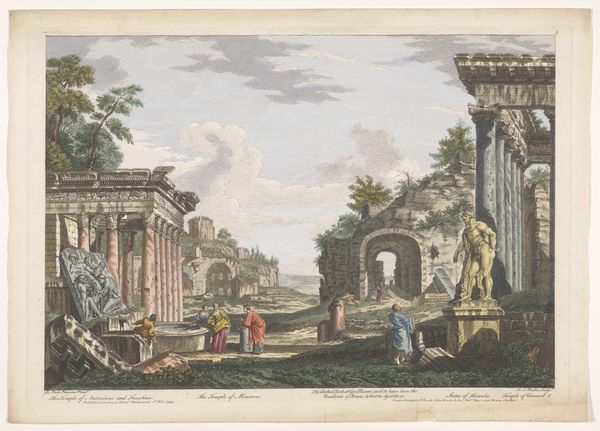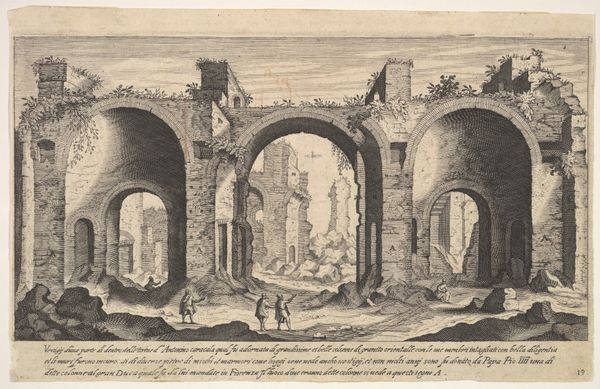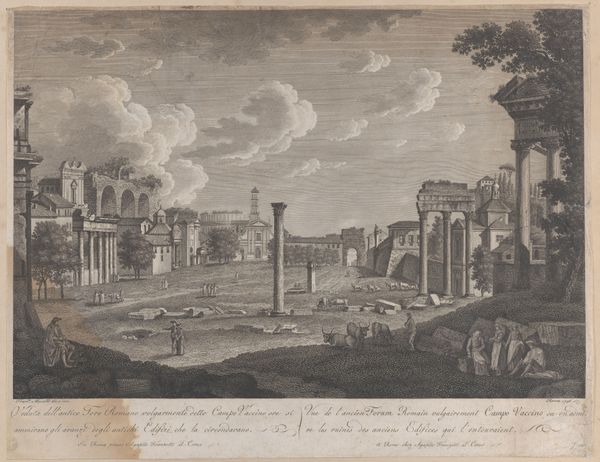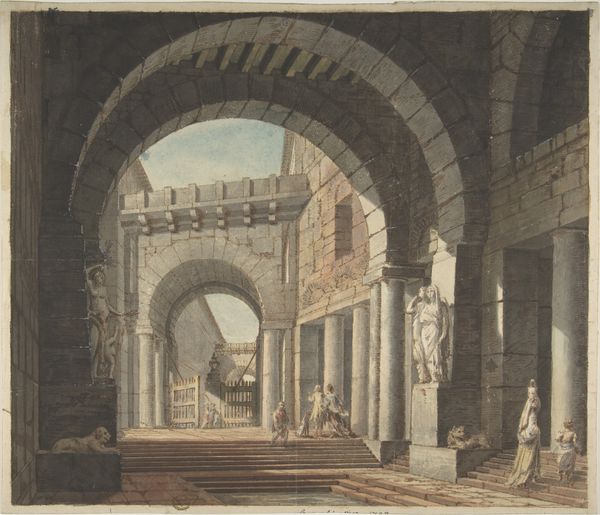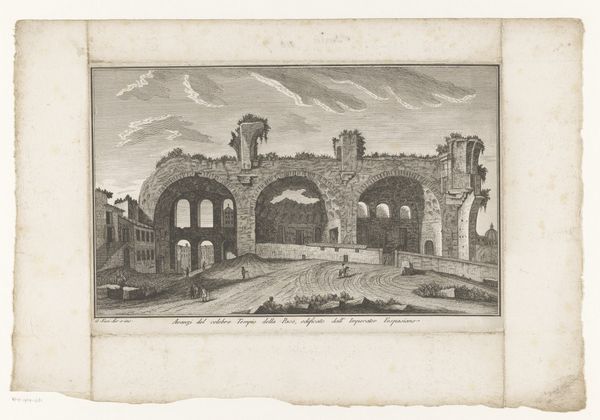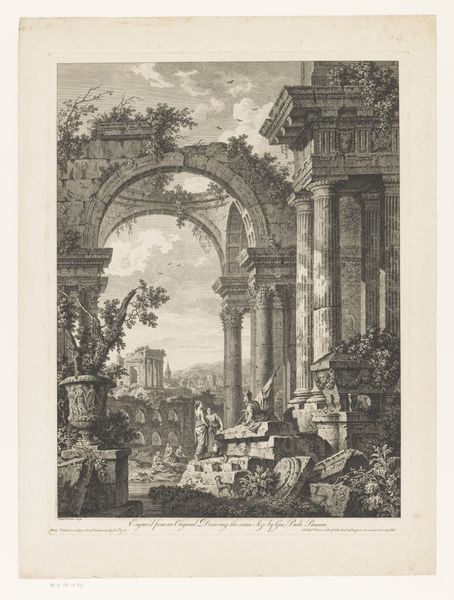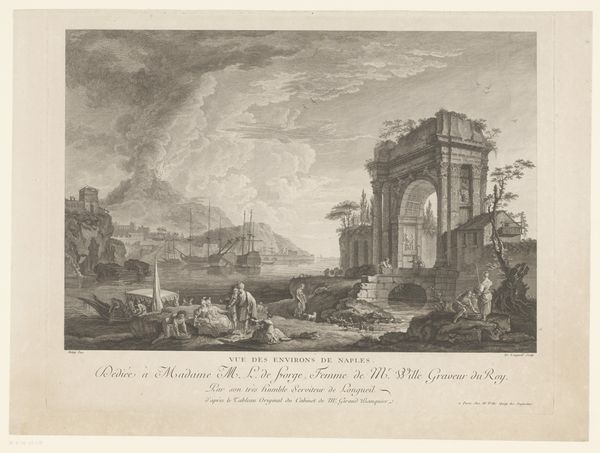
Gezicht op de ruïne van de boog van de zuilengalerij te Palmyra, gezien vanaf de oostzijde 1745 - 1775
0:00
0:00
print, watercolor, engraving
# print
#
landscape
#
classical-realism
#
perspective
#
watercolor
#
cityscape
#
watercolour illustration
#
engraving
#
rococo
Dimensions: height 283 mm, width 391 mm
Copyright: Rijks Museum: Open Domain
Editor: So this is "View of the Ruins of the Colonnade Arch at Palmyra, seen from the East Side" by Jean-François Daumont, dating roughly from 1745 to 1775. It's a print, a watercolor and engraving. The delicate colors give this scene of ruins such a wistful, almost melancholic feeling. What strikes you when you look at this work? Curator: The architectural structure immediately commands attention, doesn't it? Note the use of perspective – a very deliberate application that forces the viewer's gaze deep into the image. How would you characterize the state of the construction depicted here? Editor: Ruined, definitely. Crumbling stones, missing pieces… but there's still such grandeur to the arches and columns. Do you think the artist is making a statement about the passage of time? Curator: That's an understandable inference, but consider also the lines themselves. Daumont employs precise, almost mathematical linework juxtaposed with softer washes of watercolor. The interplay here isn't merely about ruin; it is about how we *perceive* ruin. The sharp details in the foreground, becoming less defined as our eye moves into the distance. Why is that so important to the composition? Editor: To enhance the illusion of depth, of course! To emphasize the scale. It really does feel like you could walk right into this image. Curator: Precisely. The skill with which the artist manipulated formal elements really creates a potent visual experience. The tension between the permanence of stone and the ephemerality suggested by the watercolor washes enhances this experience. Editor: I see your point. I was so caught up in the scene itself, I almost missed how the artist was actively shaping my perception. It's more than just a picture of ruins. It’s the artist showing me the ruins, and telling me how to understand them. Curator: A key component of understanding formalism. Looking beyond the subject and interrogating how it affects meaning is critical.
Comments
No comments
Be the first to comment and join the conversation on the ultimate creative platform.
